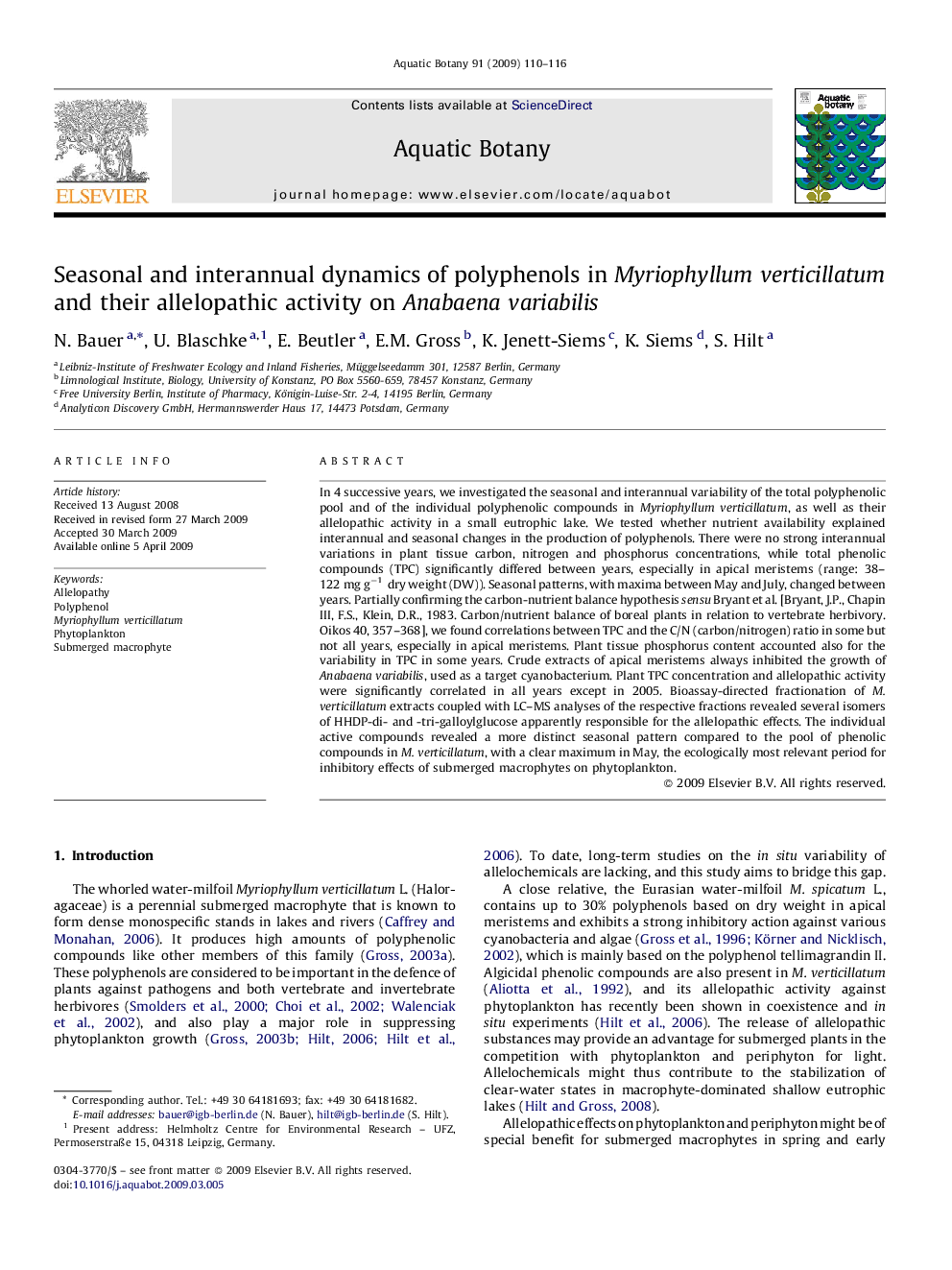| کد مقاله | کد نشریه | سال انتشار | مقاله انگلیسی | نسخه تمام متن |
|---|---|---|---|---|
| 4528316 | 1324299 | 2009 | 7 صفحه PDF | دانلود رایگان |

In 4 successive years, we investigated the seasonal and interannual variability of the total polyphenolic pool and of the individual polyphenolic compounds in Myriophyllum verticillatum, as well as their allelopathic activity in a small eutrophic lake. We tested whether nutrient availability explained interannual and seasonal changes in the production of polyphenols. There were no strong interannual variations in plant tissue carbon, nitrogen and phosphorus concentrations, while total phenolic compounds (TPC) significantly differed between years, especially in apical meristems (range: 38–122 mg g−1 dry weight (DW)). Seasonal patterns, with maxima between May and July, changed between years. Partially confirming the carbon-nutrient balance hypothesis sensu Bryant et al. [Bryant, J.P., Chapin III, F.S., Klein, D.R., 1983. Carbon/nutrient balance of boreal plants in relation to vertebrate herbivory. Oikos 40, 357–368], we found correlations between TPC and the C/N (carbon/nitrogen) ratio in some but not all years, especially in apical meristems. Plant tissue phosphorus content accounted also for the variability in TPC in some years. Crude extracts of apical meristems always inhibited the growth of Anabaena variabilis, used as a target cyanobacterium. Plant TPC concentration and allelopathic activity were significantly correlated in all years except in 2005. Bioassay-directed fractionation of M. verticillatum extracts coupled with LC–MS analyses of the respective fractions revealed several isomers of HHDP-di- and -tri-galloylglucose apparently responsible for the allelopathic effects. The individual active compounds revealed a more distinct seasonal pattern compared to the pool of phenolic compounds in M. verticillatum, with a clear maximum in May, the ecologically most relevant period for inhibitory effects of submerged macrophytes on phytoplankton.
Journal: Aquatic Botany - Volume 91, Issue 2, August 2009, Pages 110–116